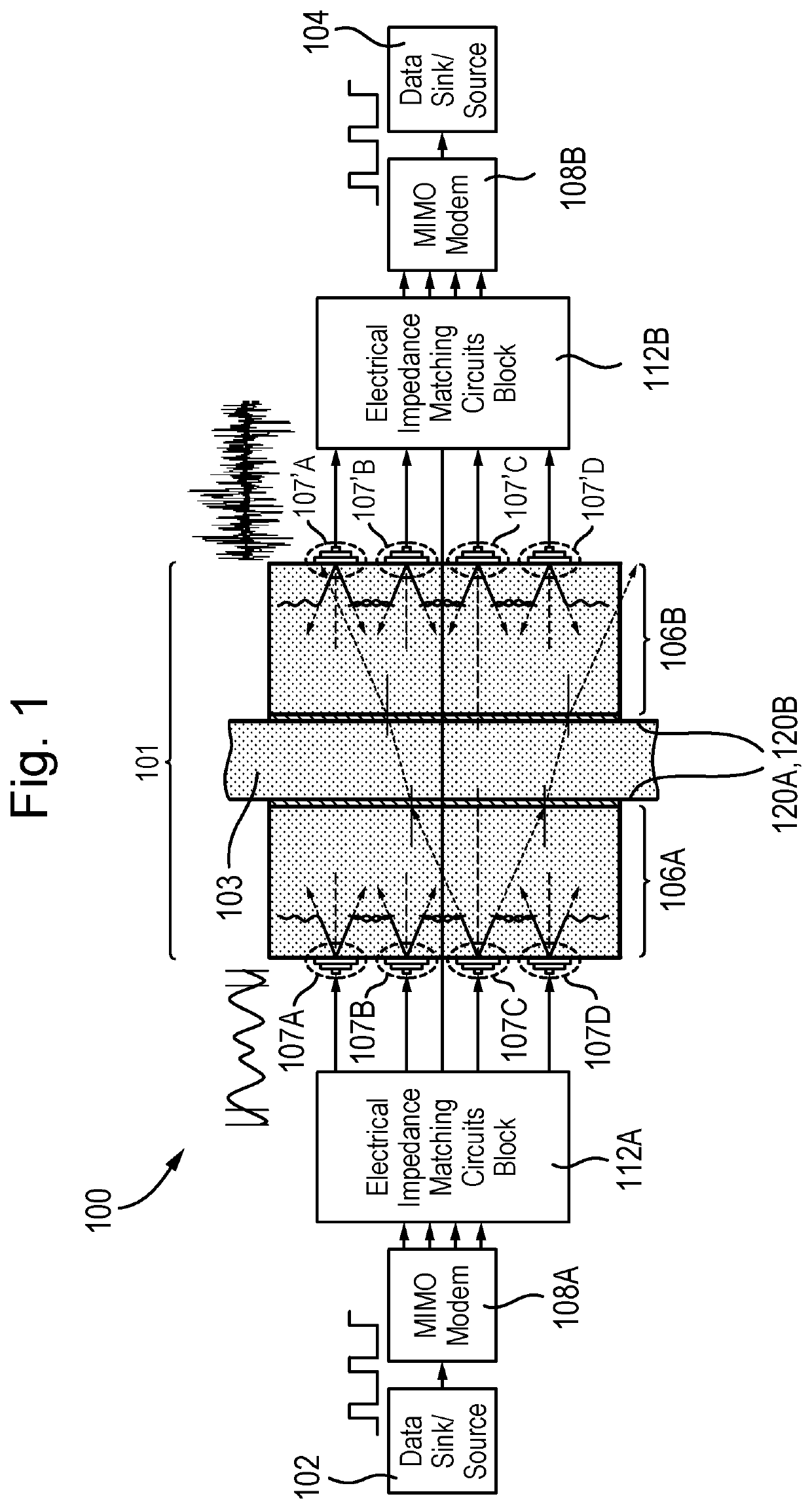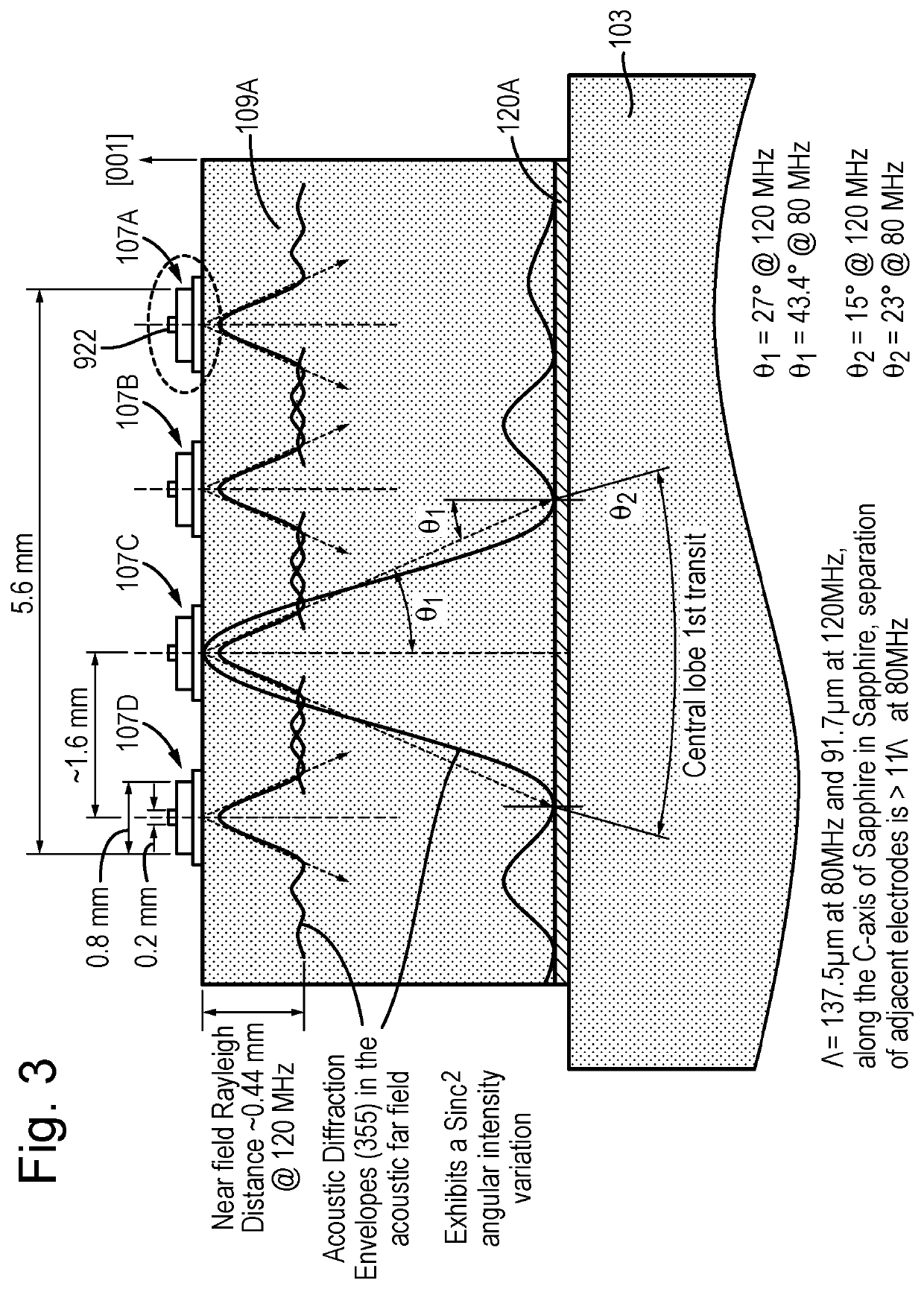MIMO communication system and data link
a communication system and a data link technology, applied in the field of mimo communication system and data link, can solve the problems of high fidelity analogue signals that cannot be transmitted through a practical ultrasonic acoustic data link without, the bond line is extremely vulnerable to temperature-induced delamination, and the thin bond layer is unrealistic to achiev
- Summary
- Abstract
- Description
- Claims
- Application Information
AI Technical Summary
Benefits of technology
Problems solved by technology
Method used
Image
Examples
Embodiment Construction
[0079]FIG. 1 is a block diagram of an example acoustic MIMO communication system 100. The diagram shows the top level blocks that support the transmission of data from a data source 102 on the left-hand side, via an acoustic MIMO data link 101, to a data sink 104 on the right-hand side. The example system is intrinsically symmetrical (although in practice there may be lateral offsetting of some components) and could alternatively be used to transmit data from right to left, with the roles of the source 102 and sink 104 being reversed. The example embodiment is intended to provide high speed digital communications through a thin, e.g. 10 mm thick, wall / barrier 103 of ballistic grade aluminium over the frequency range 80 MHz to 120 MHz. Using an LTE based signal modulation scheme the embodiment can be capable of supporting data transfer rates of greater than 300 Mbps.
[0080]Simultaneous full duplex data transmission cannot be supported over the same frequency band of operation in the e...
PUM
 Login to View More
Login to View More Abstract
Description
Claims
Application Information
 Login to View More
Login to View More - R&D
- Intellectual Property
- Life Sciences
- Materials
- Tech Scout
- Unparalleled Data Quality
- Higher Quality Content
- 60% Fewer Hallucinations
Browse by: Latest US Patents, China's latest patents, Technical Efficacy Thesaurus, Application Domain, Technology Topic, Popular Technical Reports.
© 2025 PatSnap. All rights reserved.Legal|Privacy policy|Modern Slavery Act Transparency Statement|Sitemap|About US| Contact US: help@patsnap.com



